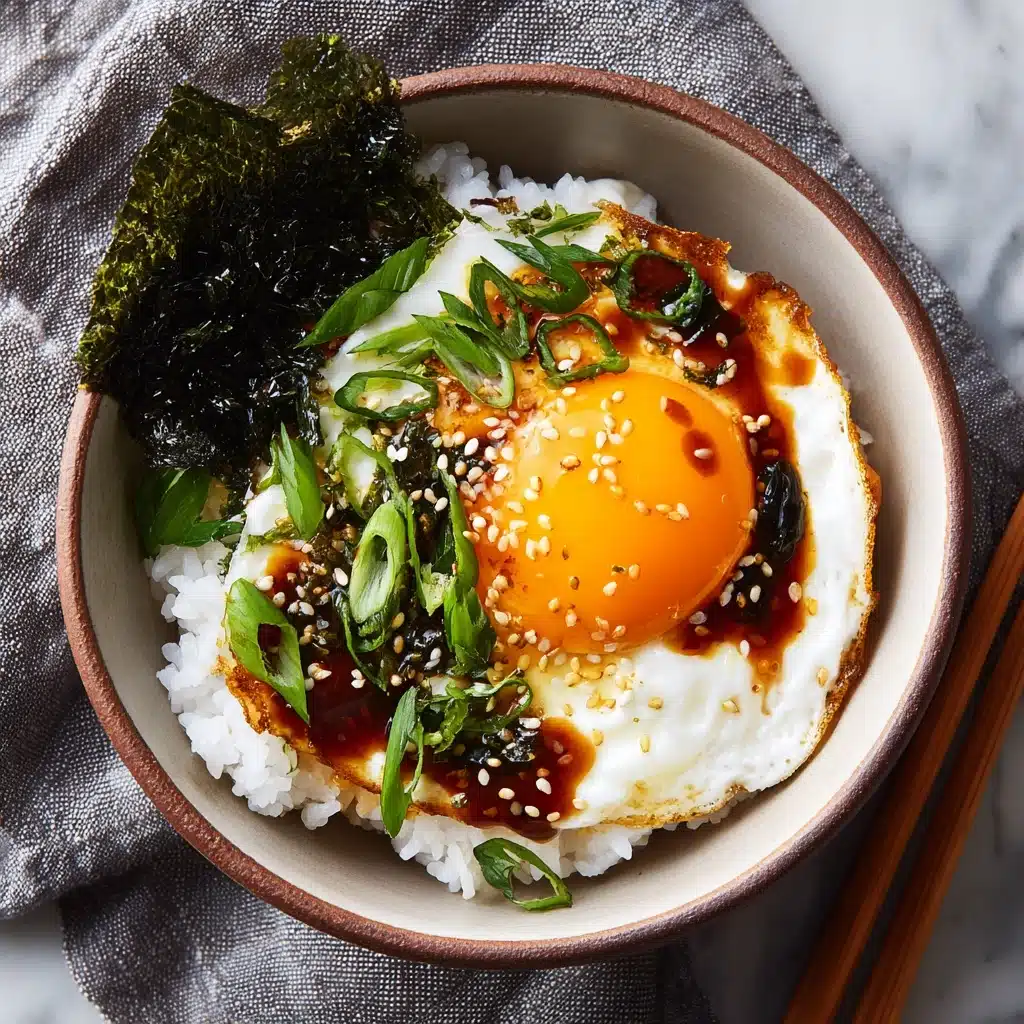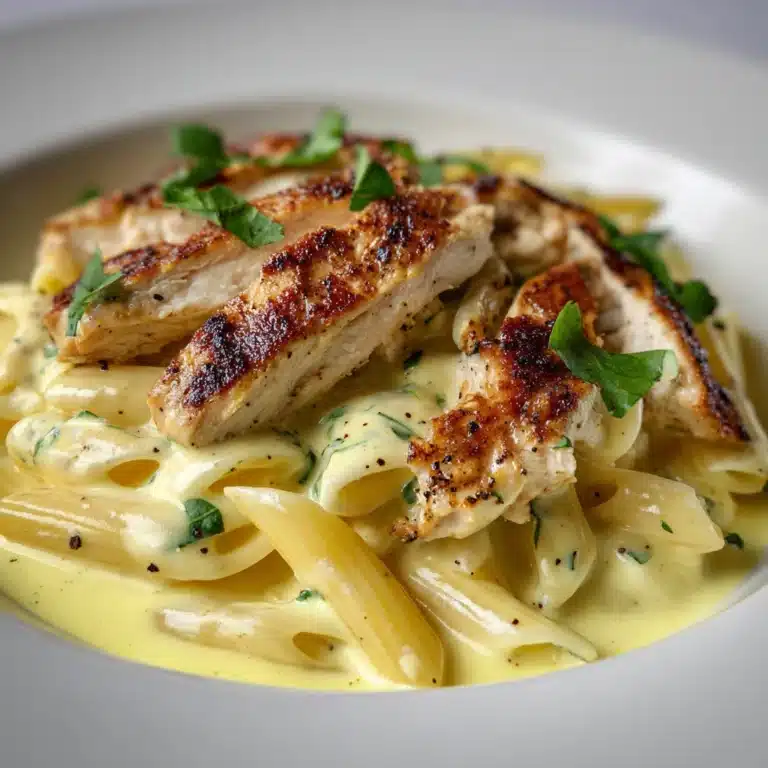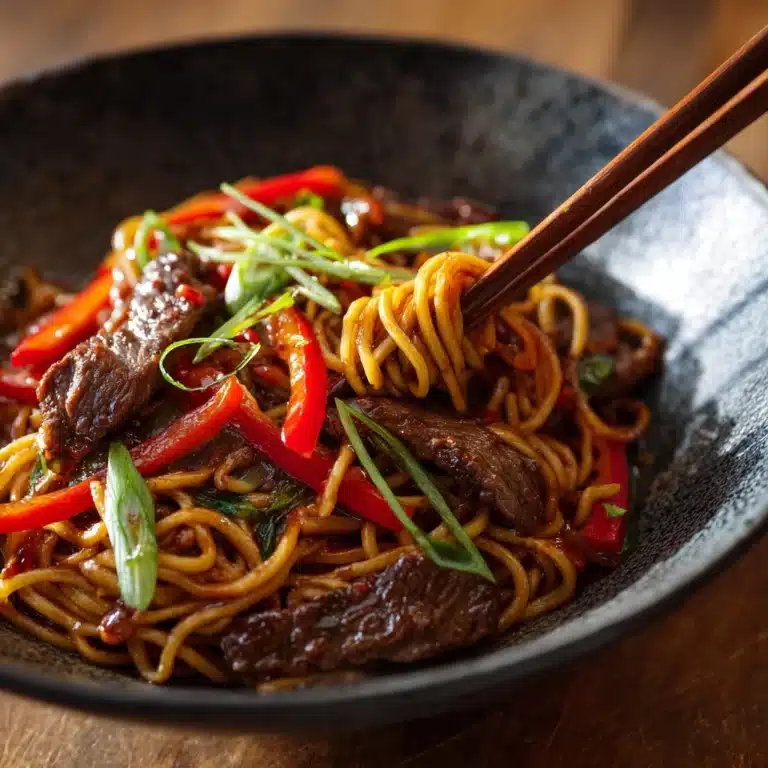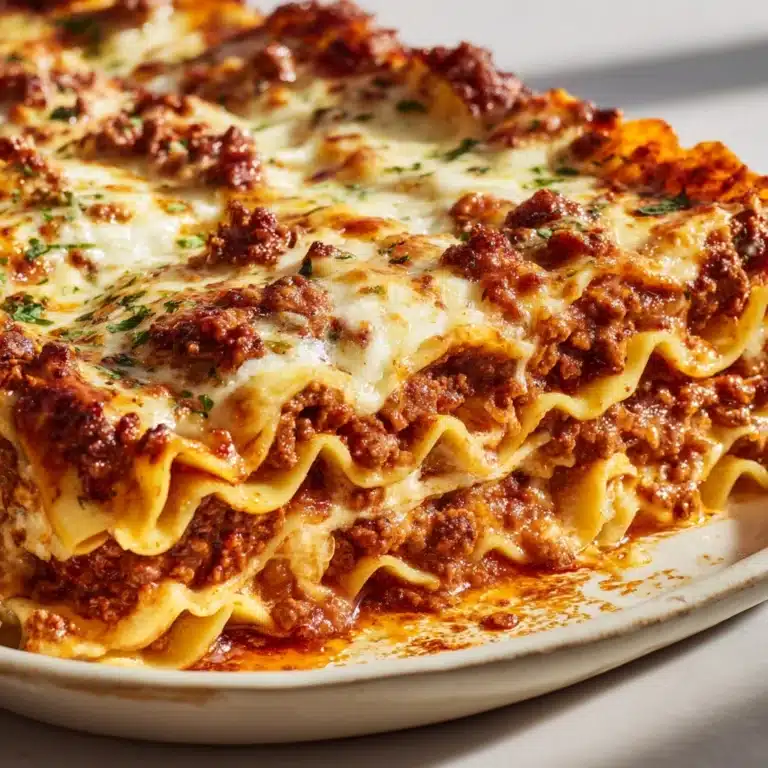If you’ve ever craved pure comfort in a bowl, Korean Egg Rice is about to win a permanent spot in your heart (and your recipe collection). With its steamy rice, silkily cooked eggs, and irresistible mix of savory soy, rich butter, and nutty sesame oil, this classic Korean dish is all about cozy simplicity. Even on your busiest mornings or laziest nights, a bowl of Korean Egg Rice promises a quick escape to deliciousness, made even better with green onions, crunchy seaweed, and the spicy tang of kimchi on the side.
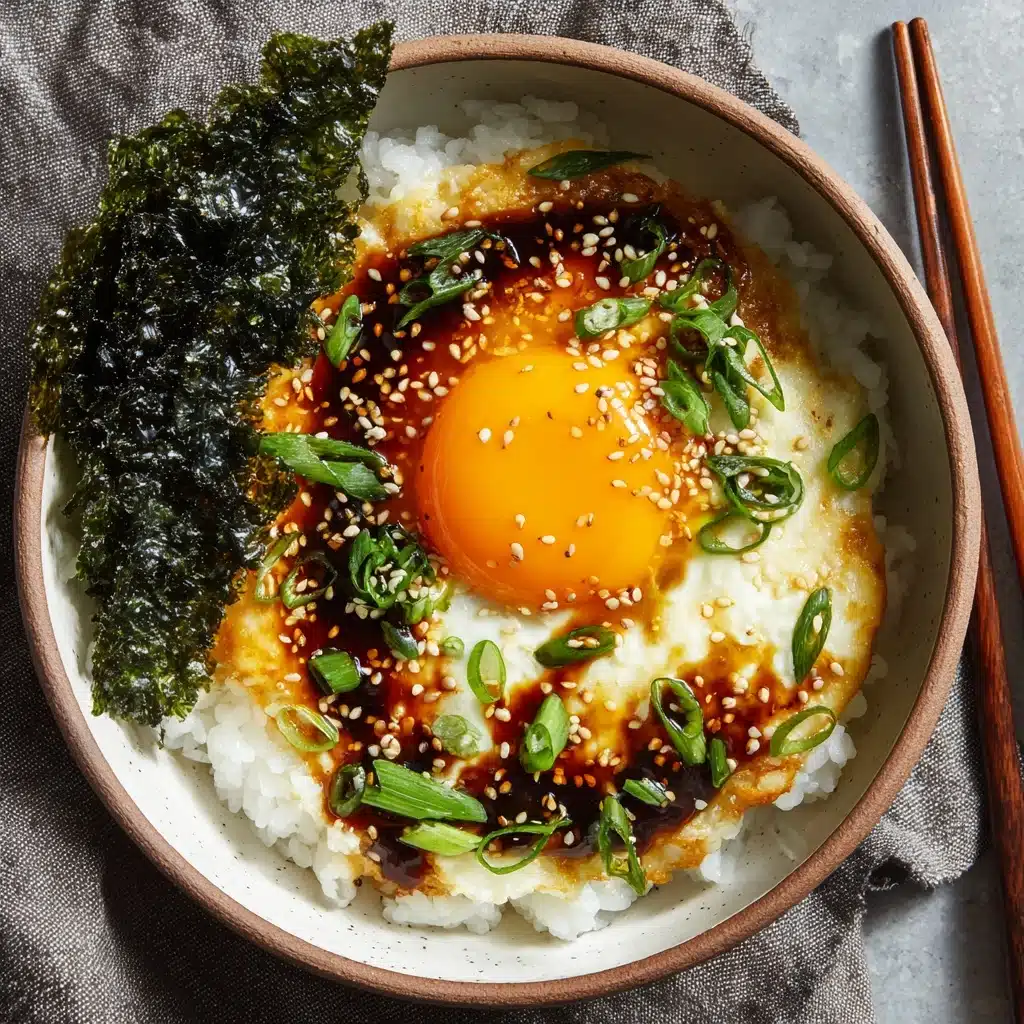
Ingredients You’ll Need
Here’s the magic of Korean Egg Rice: you need just a handful of everyday ingredients, but each one matters. Every component, from the glistening butter to the final sprinkle of sesame seed, plays a role in turning humble rice and eggs into a dish that feels like a culinary hug.
- Cooked short-grain rice (2 cups, warm): Steamy, sticky rice gives the perfect base, soaking up every bit of flavor.
- Large eggs (2): The hero of the bowl—soft, runny, or scrambled to your liking for creaminess and extra protein.
- Unsalted butter (1 tablespoon): Adds just the right touch of richness and helps marry all the savory flavors.
- Soy sauce (1 tablespoon): Brings deep umami and saltiness—a must for classic flavor.
- Sesame oil (½ teaspoon): Just a drizzle for nutty aroma, elevating every bite with warmth.
- Salt and pepper (to taste): Fine-tune the seasoning so the dish shines just how you like it.
- Green onion (1, finely chopped): Adds fresh crunch and a pop of color that brightens up every spoonful.
- Toasted sesame seeds (for garnish): A final sprinkle for texture and a subtle nutty flavor.
- Roasted seaweed (for serving, optional): Offers that classic Korean touch—wrap a bite of rice and egg for added crunch and savoriness.
- Kimchi (on the side, optional): For a spicy, tangy contrasting bite that makes the meal complete.
How to Make Korean Egg Rice
Step 1: Cook the Eggs
Set a small skillet over medium heat and add the butter, letting it melt and bubble gently. Crack the eggs into the pan and cook them sunny-side up for gooey yolks, or flip for over-easy. If you’re in the mood for something a little more homey, give them a gentle scramble—either way, you’ll be rewarded with creamy eggs that blend beautifully into the rice!
Step 2: Prepare the Rice Bowl
While the eggs are cooking, pile the warm, soft short-grain rice into a serving bowl. This foundation is the heart of Korean Egg Rice, ready to soak up all the goodness from the toppings you’re about to add.
Step 3: Season the Rice
Drizzle the soy sauce and sesame oil over the rice, then give it a gentle stir so every grain gets evenly coated. Taste, then season with a pinch of salt and a twist of black pepper. This simple step is what makes each bite sing with umami flavor.
Step 4: Assemble
Nestle your cooked eggs right on top of the seasoned rice. Sprinkle generously with finely chopped green onions and toasted sesame seeds for a hit of freshness and crunch. It’s that classic contrast that makes Korean Egg Rice so satisfying!
Step 5: Serve and Enjoy
Rush this bowl to the table immediately, while everything is hot and aromatic. If you love texture, add roasted seaweed on the side to fold around bites of rice and egg. Kimchi is wonderful here, lending plenty of punchy flavor alongside all that creamy richness.
How to Serve Korean Egg Rice
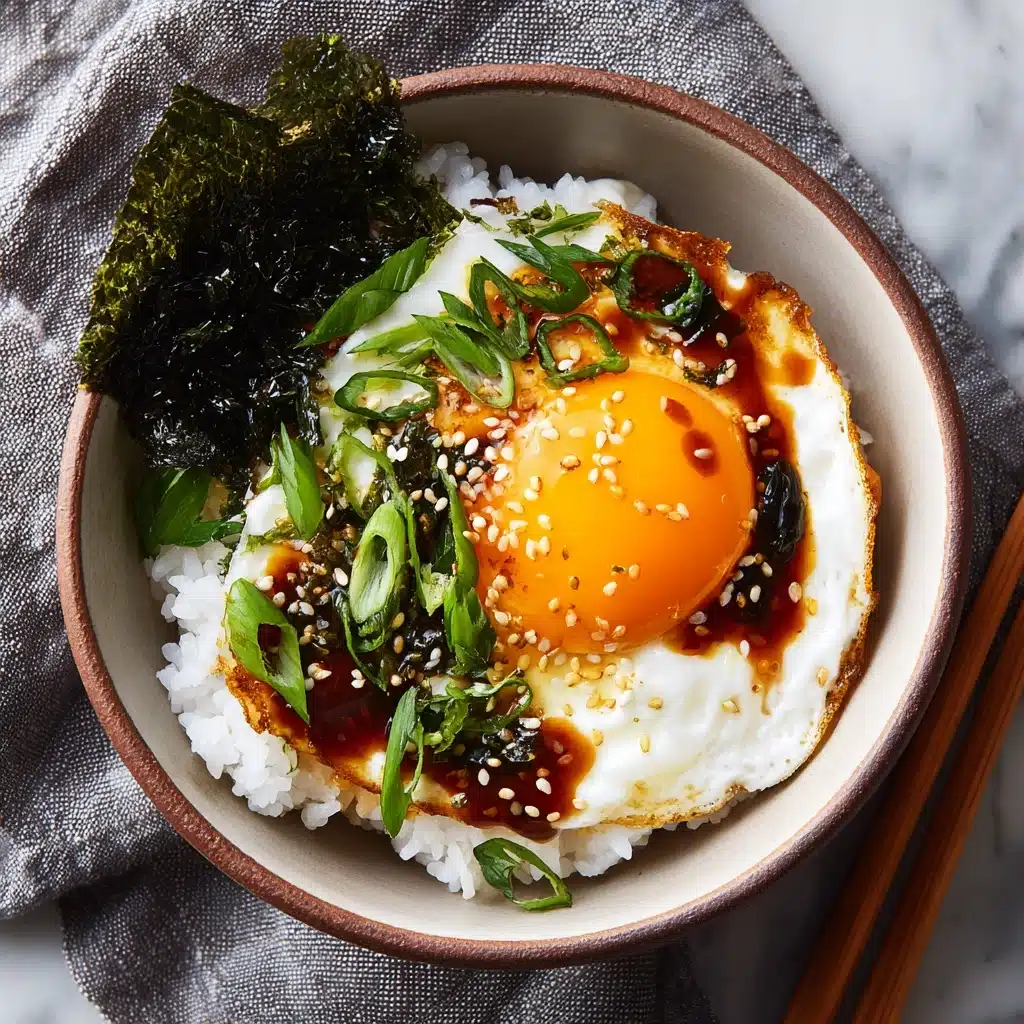
Garnishes
You can easily personalize your Korean Egg Rice with extra garnishes. A few more toasted sesame seeds, a scattering of extra green onion tops, or even a drizzle of gochujang or chili crisp for those who like a kick—the finishing touches make the bowl feel special and tailored just for you.
Side Dishes
Traditionally, Korean Egg Rice pairs beautifully with small sides like kimchi, pickled radish, or quick cucumber salads. These tangy, crunchy sides add freshness and contrast to the rich, velvety bowl, making every spoonful even more exciting.
Creative Ways to Present
Try serving Korean Egg Rice in a stone bowl for extra authenticity, letting the edges of the rice get delightfully crisp. Or, for a fun twist, serve in individual mugs for a cozy breakfast or pack into a lunchbox to perk up your workday. This dish shines wherever you serve it!
Make Ahead and Storage
Storing Leftovers
If you find yourself with extra Korean Egg Rice, simply transfer it to an airtight container and refrigerate for up to 2 days. For best quality, store the eggs and rice separately to maintain texture, then assemble just before serving.
Freezing
While Korean Egg Rice is best enjoyed fresh, you can freeze the plain cooked rice for up to 1 month. Eggs, once cooked, won’t freeze as nicely, so prepare those fresh for the best bowl. When cravings strike, just reheat your rice and top with a new egg.
Reheating
To reheat, microwave the rice in a covered bowl with a splash of water until steamy. For the eggs, a quick warm-up in a buttered skillet works wonders, or simply fry a new one for that perfect just-cooked taste. Assemble as usual and enjoy.
FAQs
What is the best type Main Course
Short-grain rice is ideal, as its sticky texture holds together beautifully and absorbs all the flavorful toppings. If you only have medium-grain or sushi rice, those work too—just avoid long-grain, as it won’t give you that signature comforting chew.
Can I use oil instead of butter?
Yes! While butter adds unbeatable richness, a neutral oil or even olive oil can be substituted for a lighter touch. You could also try using a bit of flavored oil, like chili oil, for a modern spin on classic Korean Egg Rice.
Is this dish spicy?
Korean Egg Rice isn’t spicy by default, but you can easily add some heat. Drizzle on a bit of gochujang, chili oil, or scatter sliced fresh chili over the top if you prefer your breakfast (or dinner) with a bit of a punch.
Can I make Korean Egg Rice vegan?
Absolutely! Simply swap the eggs for a plant-based alternative, use vegan butter or oil, and ensure your kimchi is vegan-friendly. The beauty of this dish is how easily it adapts to your dietary needs while still delivering crowd-pleasing flavor.
What else can I add to Korean Egg Rice?
Get creative! Add sautéed mushrooms, stir in shredded nori, or toss in steamed veggies or a handful of cheese for fusion flair. This dish is a blank canvas, perfect for using up odds and ends in the fridge while keeping things deliciously satisfying.
Final Thoughts
Now that you know just how easy, cozy, and endlessly customizable Korean Egg Rice can be, it’s time to grab a pan and make your very own bowl. For breakfast, lunch, or a midnight bite, you simply can’t go wrong. Give it a try—you’ll soon understand why this beloved Korean comfort food is so close to my heart!
Print
Korean Egg Rice Recipe
- Total Time: 10 minutes
- Yield: 2 servings 1x
- Diet: Vegetarian
Description
Enjoy a taste of Korea with this simple yet flavorful Korean Egg Rice recipe. Perfect for any time of day, this dish combines warm rice, a sunny-side up egg, and savory seasonings for a satisfying meal.
Ingredients
Main Ingredients:
- 2 cups cooked short-grain rice (warm)
- 2 large eggs
- 1 tablespoon unsalted butter
- 1 tablespoon soy sauce
- ½ teaspoon sesame oil
- Salt and pepper to taste
Garnish:
- 1 green onion, finely chopped
- Toasted sesame seeds for garnish
- Roasted seaweed (gim) for serving (optional)
- Kimchi on the side (optional)
Instructions
- Cook the Eggs: Melt butter in a skillet over medium heat. Crack eggs into the skillet and cook sunny-side up or to your preferred doneness.
- Prepare the Rice: Place warm rice in a serving bowl. Drizzle soy sauce and sesame oil over the rice, stir gently to combine. Season with salt and pepper.
- Assemble: Top the rice with the cooked egg. Sprinkle with green onion and sesame seeds.
- Serve: Enjoy immediately with roasted seaweed and kimchi on the side if desired.
Notes
- You can scramble the eggs for a different texture.
- Add gochujang or chili crisp for a spicy kick.
- This dish is versatile for breakfast, lunch, or a snack.
- Prep Time: 5 minutes
- Cook Time: 5 minutes
- Category: Main Course
- Method: Stovetop
- Cuisine: Korean
Nutrition
- Serving Size: 1 bowl
- Calories: 330
- Sugar: 1g
- Sodium: 490mg
- Fat: 14g
- Saturated Fat: 6g
- Unsaturated Fat: 7g
- Trans Fat: 0g
- Carbohydrates: 40g
- Fiber: 1g
- Protein: 9g
- Cholesterol: 190mg
